
Overview
The public administration industry encompasses the organization, management, and implementation of government policies and programs at the federal, state, and local levels. It involves a wide range of activities, including the formulation of public policy, the management of public resources, the delivery of public services, and the regulation of the private sector in areas of public concern. This sector is characterized by its focus on serving the public interest and improving the common good through effective governance and administrative practices.
Depending on specific features and functions, GAO Tek’s Carbon dioxide gas detectors are sometimes referred to as carbon dioxide gas monitoring devices, carbon dioxide gas detection systems, carbon dioxide gas sensors, carbon dioxide detection equipment’s, carbon dioxide gas alarms, carbon dioxide monitoring instruments, carbon dioxide gas analyzers, carbon dioxide safety detectors, carbon dioxide gas alert systems, and carbon dioxide concentration monitors.
Furthermore, GAO Tek’s carbon dioxide gas detectors are further grouped into:
Alarm integrated, Data logging, Electrochemical, Handheld, High precision, Industrial, Non-dispersive infrared, Outdoor, and Rugged
GAO Tek’s Carbon dioxide gas detectors have the following applications in the public administration industry:
- Monitoring Indoor Air Quality in Government Building: Government offices, courthouses, and other public administration facilities often experience high occupancy levels, leading to increased levels of CO2. Our CO2 gas detectors help in monitoring indoor air quality, ensuring that it remains within safe limits. This not only aids in creating a healthier work environment but also improves the decision-making process by ensuring that employees and visitors are in a well-ventilated space.
- Ensuring Safety in Public Transportation Hubs: Public transportation hubs, such as subway stations and bus terminals, are enclosed spaces where air quality can quickly deteriorate. By integrating GAO’s CO2 detectors, the Public Administration Industry can monitor CO2 levels in real time, enhancing passenger safety and comfort. This proactive approach helps in maintaining optimal ventilation, preventing the buildup of harmful CO2 levels.
- Enhancing Public Safety in Emergency Shelters: During natural disasters or emergencies, public shelters become a refuge for affected populations. It’s crucial that these shelters maintain a safe environment for all occupants. GAO Tek’s CO2 gas detectors are employed to ensure that CO2 levels within these shelters are kept at safe levels, safeguarding the health of individuals seeking shelter during crises.
- Supporting Urban Planning and Environment Monitoring: GAO’s CO2 detectors are instrumental in urban planning and environmental monitoring projects undertaken by the Public Administration Industry. By assessing CO2 levels in different urban and public spaces, policymakers can make informed decisions regarding green space development, traffic management, and pollution control strategies, contributing to more sustainable urban environments.
- Compliance with Health and Safety Regulations: The Public Administration Industry is tasked with adhering to various health and safety regulations, including those related to air quality. By utilizing our CO2 gas detectors, government entities can ensure compliance with these regulations, avoiding potential penalties and reinforcing their commitment to public health.
More information on carbon dioxide gas detectors and their applications in other industries can be found on
This category page lists related products
Systems in the Public Administration Industry Utilizing Carbon Dioxide Gas Detectors
Here are some popular systems in the public administration industry using carbon dioxide gas detectors:
Indoor Air Quality Monitoring System
- AirGuard Management Software: AirGuard is a comprehensive air quality management software designed to work with CO2 gas detectors. It provides real-time data analysis, historical data tracking, and alerts for indoor air quality levels in public buildings, ensuring a healthy environment for employees and visitors.
- VentSmart Control System: VentSmart is an advanced HVAC control software that integrates with CO2 detectors to optimize ventilation rates based on real-time indoor air quality readings. It aims to reduce energy consumption while maintaining a safe and comfortable environment in government facilities.
Public Transportation Environmental Monitoring System
- TransitAir Monitoring Platform: This platform offers real-time monitoring of CO2 levels in public transportation systems, such as subways and buses. TransitAir facilitates the automatic adjustment of ventilation systems to maintain optimal air quality, enhancing passenger comfort and safety.
- EcoRide Analytics: EcoRide is designed to analyze environmental data collected from CO2 detectors within transportation hubs. It provides insights into peak CO2 levels, helping administrators implement targeted strategies for air quality improvement and energy efficiency.
Emergency Response and Shelter Management System
- SafeHaven Monitoring Suite: In emergency shelters, SafeHaven Monitoring Suite uses data from CO2 detectors to ensure the air quality remains safe for occupants during disasters. It features emergency alerts and automated response protocols to maintain a safe environment.
- ShelterPro Environmental Control: ShelterPro offers comprehensive environmental monitoring and control within emergency shelters, utilizing CO2 level data to manage HVAC systems efficiently. It ensures the well-being of displaced individuals by maintaining optimal living conditions.
Urban Planning and Environmental Impact Analysis System
- UrbanCO2 Insight Tool: This tool integrates CO2 detection data with urban planning software to assess the environmental impact of current and proposed developments. It helps planners design greener spaces and reduce urban CO2 emissions through data-driven decisions.
- GreenSpace Planner: GreenSpace Planner uses CO2 data to identify areas in cities that need more green spaces to absorb CO2 and improve air quality. It aids in the strategic planning of parks and green corridors, contributing to healthier urban environments.
Regulatory Compliance and Reporting System
- ComplyCO2 Tracker: This software helps public administration entities track and report CO2 levels to ensure compliance with health and safety regulations. It automates the generation of compliance reports and provides alerts on potential regulatory breaches.
- EnviroReg Manager: EnviroReg Manager is a regulatory compliance software that integrates with CO2 gas detectors. It enables public administrators to easily manage compliance with environmental regulations, providing a dashboard for monitoring, reporting, and auditing CO2 emissions data.
GAO Tek’s targeted markets are North America, particularly the U.S. and Canada.
Complying with Government Regulations
GAO Tek’s carbon dioxide gas detectors comply or help our customers comply with U.S. government regulations such as:
- Occupational Safety and Health Administration (OSHA) Regulations
- Environmental Protection Agency (EPA) Regulations
- National Institute for Occupational Safety and Health (NIOSH) Regulations
- Department of Transportation (DOT) Regulations
- National Fire Protection Association (NFPA) Regulations
- Department of Labor (DOL) Regulations
- Food and Drug Administration (FDA) Regulations
- National Oceanic and Atmospheric Administration (NOAA) Regulations
- Federal Aviation Administration (FAA) Regulations
- Environmental Protection Agency (EPA) Regulations
GAO Tek’s carbon dioxide gas detectors comply or help our clients comply with Canadian regulations such as:
- Canadian Environmental Protection Act (CEPA) Regulations
- Workplace Hazardous Materials Information System (WHMIS) Regulations
- Canadian Occupational Health and Safety (OHS) Regulations
- Transportation of Dangerous Goods (TDG) Regulations
- National Energy Board (NEB) Regulations
- Canadian Nuclear Safety Commission (CNSC) Regulations
- Canadian Food Inspection Agency (CFIA) Regulations
- Health Canada Regulations
- Natural Resources Canada (NRCan) Regulations
- Environment and Climate Change Canada (ECCC) Regulations
Case Studies of Carbon Dioxide Gas Detectors in the Public Administration Industry
Carbon dioxide gas detectors are sometimes called carbon dioxide gas monitoring devices, carbon dioxide gas detection systems, carbon dioxide gas sensors, carbon dioxide detection equipment, carbon dioxide gas alarms, carbon dioxide monitoring instruments, carbon dioxide gas analyzers, carbon dioxide safety detectors, carbon dioxide gas alert systems, and carbon dioxide concentration monitors.
Here are some practical examples of using carbon dioxide gas detectors in the public administration industry:
In Boston, Massachusetts, the integration of CO2 gas detectors in public schools has significantly improved indoor air quality, resulting in enhanced cognitive performance and reduced absenteeism among students and staff. This initiative, complemented by the AirGuard Management Software, allows for real-time monitoring and control of air quality, demonstrating a proactive approach to public health within educational facilities.
The city of Chicago, Illinois, deployed carbon dioxide gas detectors across its public transportation network to monitor and manage air quality in real time. With the assistance of the TransitAir Monitoring Platform, the city was able to optimize ventilation systems, ensuring passenger comfort and reducing potential health risks associated with poor air quality in confined spaces.
In Atlanta, Georgia, emergency shelters equipped with CO2 gas detectors used the SafeHaven Monitoring Suite to maintain safe air quality levels during hurricane evacuations. This technology ensured that displaced individuals had access to safe environments, highlighting the importance of prepared public response systems in disaster-prone areas.
San Francisco, California, implemented an Urban Planning and Environmental Impact Analysis System that utilizes CO2 data from public spaces to inform sustainable urban development projects. The UrbanCO2 Insight Tool has been instrumental in planning green spaces effectively, contributing to the city’s long-term environmental sustainability goals.
In Toronto, Ontario, public administration offices adopted CO2 gas detectors to monitor indoor air quality as part of a broader initiative to create healthier work environments. By using the VentSmart Control System, the offices were able to adjust HVAC operations dynamically, leading to significant energy savings and improved employee wellness. This case study exemplifies how technology can be leveraged to achieve environmental and health objectives in the public sector, setting a precedent for other Canadian cities to follow in enhancing workplace conditions through innovative air quality management.
GAO RFID Inc. RFID Hardware, a sister company of GAO Tek Inc., is ranked as a top 10 RFID suppliers in the world. Its RFID, BLE, and IoT products have also been widely used in the public administration industry. Articles about related industries are given below:
Use of Carbon Dioxide Gas Detectors with Leading Software and Cloud Services in the Public Administration Industry
GAO Tek has used or has facilitated its customers to use GAO’s carbon dioxide gas detectors with some of the leading software and cloud services in their applications. Examples of such leading software and cloud services include:
- AirThings Dashboard
- TSI TrakPro Data Analysis Software
- Gasmet Gas Analyzer Software (Calcmet)
- Vaisala Veriteq Continuous Monitoring System (CMS)
- Campbell Scientific LoggerNet Software
- RStudio
- CO2CRC Otway Project Monitoring Software
- DNV GL CO2VERIFY Monitoring and Reporting Software
- YSI AquaViewer Aquaculture Monitoring Software
- AquaMaof Aquaculture Management System (AMS)
- CO2VerifyTM Cloud-Based Monitoring Platform
- Senseware Environmental Monitoring Platform
- Environics GasMix Software
- Siemens Sensor Intelligence Cloud
- Honeywell Industrial IoT Platform
GAO Tek’s carbon dioxide gas detectors and their applications in other industries are listed on
Other related products can be found on
Meeting Customers’ Demands
Large Choice of Products
In order to satisfy the diversified needs of their corporate customers, GAO Tek Inc. and its sister company GAO RFID Inc. together offer a wide choice of testing and measurement devices, network products, RFID, BLE, IoT, and drones.
Fast Delivery
To shorten the delivery to our customers, GAO has maintained a large stock of its products and can ship overnight within the continental U.S. and Canada from the nearest warehouse.
Local to Our Customers
We are located in both the U.S. and Canada. We travel to customers’ premises if necessary. Hence, we provide very strong local support to our customers in North America, particularly the U.S. and Canada.
Furthermore, we have built partnerships with some integrators, consulting firms, and other service providers in different cities to further strengthen our services. Here are some of the service providers in the public administration industry we have worked with to serve our joint customers:
- ABB Ltd.
- Accenture
- Capgemini
- Cisco Systems, Inc.
- Cognizant
- Deloitte
- Emerson Electric Co.
- GE Digital
- HCL Technologies
- Honeywell International Inc.
- IBM Corporation
- Infosys Limited
- Johnson Controls International plc
- PwC (PricewaterhouseCoopers)
- Rockwell Automation, Inc.
- Schneider Electric SE
- Siemens AG
- Tata Consultancy Services (TCS)
- Wipro Limited
GAO has Many Customers in the Public Administration Industry
The products from both GAO Tek Inc. and GAO RFID Inc. have been widely used in the public administration industry by many customers, including some leading companies. Here is more information on applications of GAO RFID Inc.’s products in the public administration industry. Articles about related industries are given below:
Here are some of GAO’s customers in the public administration industry:
- California Environmental Protection Agency
- Florida Department of Health
- Health Canada
- Illinois Department of Public Health
- Massachusetts Department of Public Health
- Michigan Department of Natural Resources
- Minnesota Department of Transportation
- New Jersey Department of Transportation
- New York City Department of Education (NYC DOE)
- North Carolina Department of Public Safety
- Ohio Environmental Protection Agency
- Oregon Department of Education
- Pennsylvania Department of Environmental Protection
- Public Safety Canada
- Texas Department of Transportation
- Transport Canada
- Virginia Department of Education
- Washington State Department of Health





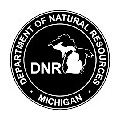

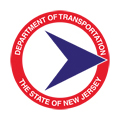


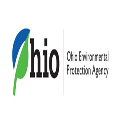


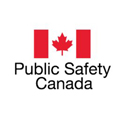

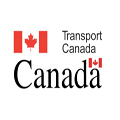


Contact Us
Here are GAO Tek’s Carbon dioxide gas detectors and they are further organized by feature:
Alarm integrated, Data logging, Electrochemical, Handheld, High precision, Industrial, Non-dispersive infrared, Outdoor, and Rugged
If you have any questions about our products or want to place an order, our technical experts can help you.
Please fill out this form or email us
